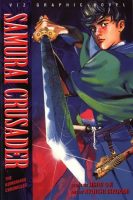My News and Reviews
It’s been a while since there have been two features posted at Experiments in Manga within the same week in addition to the usual My Week in Manga, but that’s exactly what happened last week. First there was July’s Bookshelf Overload which, minus the replacement copies for some of my recently water-damaged books, provides a list of the manga and other media that I picked up last month. (Normally I post the Bookshelf Overload feature in the second week of the month, but I switched things up a little in order to post my review of Kazuki Sakuraba’s A Small Charred Face sooner rather than later.) Last week was also Experiments in Manga’s seven-year anniversary! I wrote a little about the past year and, with some amount of sadness, also announced my upcoming (semi)-retirement from manga blogging. I’ll continue to post here at Experiments in Manga for the rest of 2017, but once 2018 arrives most of my short ramblings on manga will be found over at Manga Bookshelf (and probably at my Twitter account, too).
Quick Takes
 H. P. Lovecraft’s The Hound and Other Stories by Gou Tanabe. While I am very aware of Lovecraft’s work and influence (the Cthulhu Mythos in particular was tremendously popular among a certain segment of my friends for quite some time), I’ve actually only ever read a single collection of his short horror stories. I largely enjoy their bizarre creepiness, and so I immediately took note when I learned that Dark Horse would be releasing a volume of some of Tanabe’s manga adaptations of Lovecraft stories. Plus, I was simply happy to see more mature horror manga being licensed. The Hound and Other Stories collects the adaptations of three of Lovecraft’s stories from the early 1920s: “The Temple,” “The Hound” (the only one of which I had read the original), and “The Nameless City.” Of the three, “The Temple” was the most successful for me, Tanbe’s deliberately disconcerting artwork perfectly conveying the narrative’s dark and increasingly claustrophobic sense of dread. The Hound and Other Stories is actually the first volume in a series. Nothing official has been announced regarding the translation of future volumes, but Dark Horse has indicated that the possibility is there. I know I’d certainly be interested in reading more of Tanabe’s work, Lovecraftian or otherwise.
H. P. Lovecraft’s The Hound and Other Stories by Gou Tanabe. While I am very aware of Lovecraft’s work and influence (the Cthulhu Mythos in particular was tremendously popular among a certain segment of my friends for quite some time), I’ve actually only ever read a single collection of his short horror stories. I largely enjoy their bizarre creepiness, and so I immediately took note when I learned that Dark Horse would be releasing a volume of some of Tanabe’s manga adaptations of Lovecraft stories. Plus, I was simply happy to see more mature horror manga being licensed. The Hound and Other Stories collects the adaptations of three of Lovecraft’s stories from the early 1920s: “The Temple,” “The Hound” (the only one of which I had read the original), and “The Nameless City.” Of the three, “The Temple” was the most successful for me, Tanbe’s deliberately disconcerting artwork perfectly conveying the narrative’s dark and increasingly claustrophobic sense of dread. The Hound and Other Stories is actually the first volume in a series. Nothing official has been announced regarding the translation of future volumes, but Dark Horse has indicated that the possibility is there. I know I’d certainly be interested in reading more of Tanabe’s work, Lovecraftian or otherwise.
 Hana & Hina After School, Volume 2 by Milk Morinaga. I’m not as interested in schoolgirl yuri manga as I am in those that feature adult women–which seem to be very few and far between in translation–but I will still happily read them. Which is probably a good thing seeing as most of the yuri manga that has been published in English tend to be set in either middle or high school. (To be fair, that can be said of numerous other genres as well.) Hana & Hina After School definitely falls into that category, and I certainly have been enjoying the manga. While it’s clear that Hina and Hana care for each other a great deal, the romance in the series is actually a little slow to develop, though it does feel more natural that way. Hina recognizes that she has a crush on Hana, and has known for some time, but Hana tends to be a little more oblivious. Hana & Hina After School concludes with the next volume; I would be incredibly surprised if the ending isn’t a happy one, but both Hina and Hana will need to fully come to terms with their feelings before that happens. In general, Hana & Hina After School is a cute and sweet series, but I do appreciate that Morinaga also incorporates some of the real-world concerns faced by people in non-heterosexual relationships.
Hana & Hina After School, Volume 2 by Milk Morinaga. I’m not as interested in schoolgirl yuri manga as I am in those that feature adult women–which seem to be very few and far between in translation–but I will still happily read them. Which is probably a good thing seeing as most of the yuri manga that has been published in English tend to be set in either middle or high school. (To be fair, that can be said of numerous other genres as well.) Hana & Hina After School definitely falls into that category, and I certainly have been enjoying the manga. While it’s clear that Hina and Hana care for each other a great deal, the romance in the series is actually a little slow to develop, though it does feel more natural that way. Hina recognizes that she has a crush on Hana, and has known for some time, but Hana tends to be a little more oblivious. Hana & Hina After School concludes with the next volume; I would be incredibly surprised if the ending isn’t a happy one, but both Hina and Hana will need to fully come to terms with their feelings before that happens. In general, Hana & Hina After School is a cute and sweet series, but I do appreciate that Morinaga also incorporates some of the real-world concerns faced by people in non-heterosexual relationships.
 Samurai Crusader: The Kumomaru Chronicles, Volumes 1-3 written by Oji Hiroi and illustrated by Ryoichi Ikegami. At this point I’ve read most of the manga available in English with which Ikegami has been involved, Samurai Crusader being one of the few exceptions up until now. Hiroi is probably best known as the creator of Sakura Wars, which I’m not particularly familiar with. (I believe Samurai Crusader is the only other manga of Hiroi’s to have been released in English.) Samurai Crusader is currently out-of-print and can be a little tricky to find, but the series can usually be found for a fairly reasonable price. (Note that the individual volumes aren’t numbered and after the first are given unique subtitles instead; Samurai Crusader is followed by Way of the Dragon and Sunrise Over Shanghai.) Taking place in the 1930s with the Second World War looming on the horizon, Samurai Crusader is an tale of action and adventure spanning the globe and featuring Ernest Hemingway as the a sidekick to the series’ protagonist Kumomaru, a noble young man who finds himself fighting against those intent on world domination. Samurai Crusader is admittedly outrageous and over-the-top, but that’s also a large part of why the series is so highly entertaining.
Samurai Crusader: The Kumomaru Chronicles, Volumes 1-3 written by Oji Hiroi and illustrated by Ryoichi Ikegami. At this point I’ve read most of the manga available in English with which Ikegami has been involved, Samurai Crusader being one of the few exceptions up until now. Hiroi is probably best known as the creator of Sakura Wars, which I’m not particularly familiar with. (I believe Samurai Crusader is the only other manga of Hiroi’s to have been released in English.) Samurai Crusader is currently out-of-print and can be a little tricky to find, but the series can usually be found for a fairly reasonable price. (Note that the individual volumes aren’t numbered and after the first are given unique subtitles instead; Samurai Crusader is followed by Way of the Dragon and Sunrise Over Shanghai.) Taking place in the 1930s with the Second World War looming on the horizon, Samurai Crusader is an tale of action and adventure spanning the globe and featuring Ernest Hemingway as the a sidekick to the series’ protagonist Kumomaru, a noble young man who finds himself fighting against those intent on world domination. Samurai Crusader is admittedly outrageous and over-the-top, but that’s also a large part of why the series is so highly entertaining.